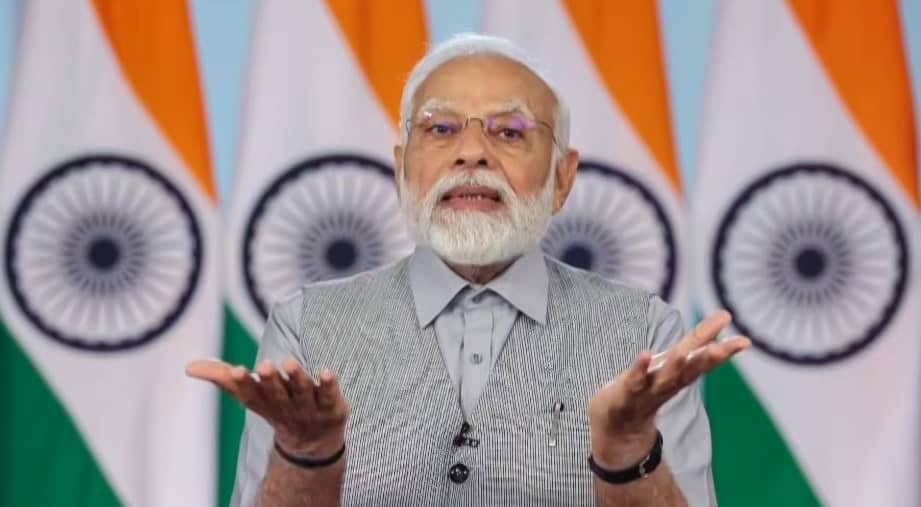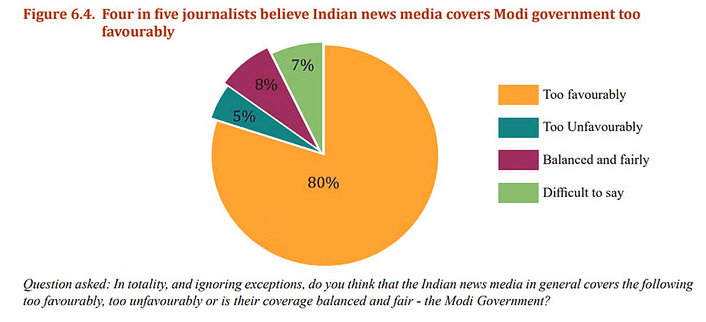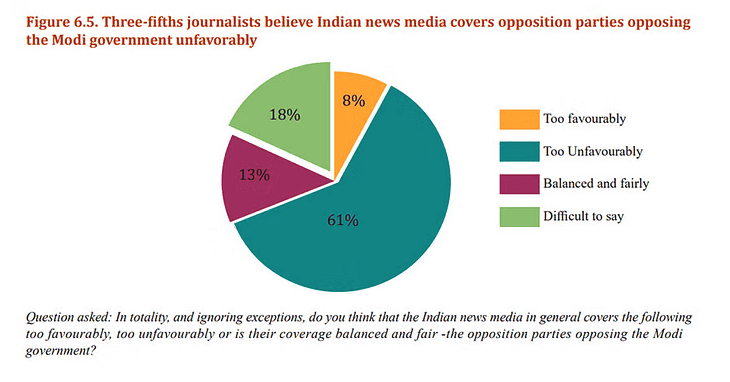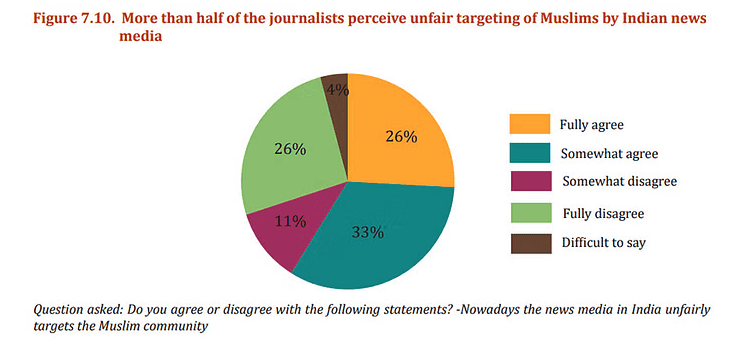
A recent study published by Lokniti and Centre for the Study of Developing Societies (CSDS) has stated that 80% of journalists in India feel that the media covers the Modi government “too favourably”.
The report, “Indian Media: Trends and Patterns”, aimed at assessing the overwhelming presence of media in everyday lives of journalists and consumers, was published on Thursday, July 26. It is a comprehensive survey of 206 journalists, around the country, across all mediums – print, TV, and digital.
Among the surveyed journalists, 75% were male. During the assessment, the participants’ age, language, level of seniority, and media association was also considered.
Among the respondents, 64% were employed by media organisations, 27% were independent journalists and 9% worked with organisations and independently as well. As many as 41% were Hindi journalists, 32% English, and the remaining 27% worked in other regional languages. Over 56% were senior journalists and mid-level journalists comprised 35% of the participants, while junior and entry-level comprised 6% and 3% respectively.
Favourable towards Modi govt
The report said that three-fourths of journalists agreed that “there is favouritism towards one party” when it comes to media coverage. Of independent journalists, 82% said that the media “generally favours certain political parties”.
73% journalists observed a bias towards one political party within media houses. When asked which political party is supported by their media organisations, 82% said the BJP, while 3% noted a bias towards the Congress.
80% journalists said that the Indian news media covers the Modi Government “too favourably”, while 61% reporting that the Opposition is covered “too unfavourably”


Biased against Muslims?
When asked if the Indian news media unfairly targets the Muslim community, 26% fully agreed and an equal 26% fully disagreed.

On press freedom
Responding to question about freedom of press, 72% of the respondents said they believe news channels are “less free to do their job properly these days”. The corresponding figure for print journalist was 55% and for digital journalists, it was 36%.
71% of independent journalists also said that newspapers today are “less free to do their job properly”.
The report also stated that journalists generally felt that the quality of news coverage had deteriorated for news channels and print, but improved for news websites.
Online bullying and mental health
Furthermore, the Lokniti-CSDS survey reports that digital journalists are more likely to encounter social media harassment, with 78% of them experiencing harassment on their online posts. For TV journalists, the figure was 55% and 54% for print.
They survey asked the respondent how many times they had been abused, threatened, bullied or trolled online for having posted or commented something on social media. A whopping 64% of them said they had been harassed “at least once”.
According to the report, more than half of the women respondents said that they feel extremely unsafe about they privacy on Twitter and Facebook.
The report also suggests that media organisations need to prioritise their employee’s well-being. They should introduce support systems like employee assistance programme, mental health resources and development opportunities, encouraging a work-life balance.



